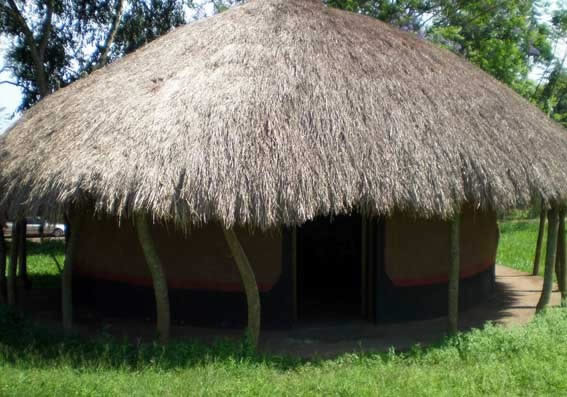
Japadhola live in eastern Uganda amidst various Bantu ethnic groups. They are said to have settled there since the middle of the 16th century. They are surrounded on all sides by the Bantu and the Nile -Hamites peoples. To the west live the Banyole and the Basoga; to their north and east live the Bagwere and Iteso; and to their south live the Basamia and Bagwe.
Origins
The Japadhola are Luo. They have similar traditions of origin with the Alur, Acholi and the Joluo of Kenya. It is said that before moving to western Kenya, it is said that the Luo first settled in western Busoga for sometime. The earliest Luo migrants settled in kaberamaido peninsular where they were joined by more Luo migrants from Pawir in Bunyoro. Then some immigrants from Busoga, Teso and Bugwere came towards Kaberamaido peninsular in the second half of the 18th century. This forced the Japadhola to extend to the south and later to the east. The land they occupied was previously vacant and this helped them maintain their traditional culture free from foreign influences. Thus unlike the Bito- Luo, who were Batuized and assimilated in Bunyoro, the Japadhola were able to maintain themselves as a distinct Luo group amidst the various Bantu and Nilo- Hamitic societies.
Religion
Like the Acholi, the Lugbara and the Langi, the Japadhola conceived of jok as a supreme being.
However, they did not take it as far as the Acholi and the Langi did. Among the Japadhola, the concept of jok was later merged into the Bantu belief in Were, a supreme being whose chief services to mankind were mainly connected with fertility.
Japadhola traditions assert that they have always believed in one Supreme Being called Were. In physical terms, Were was conceived of as a white merciful and good being who could manifest himself in various ways. As god of court yard known as Were madiodiopo, he was believed to take care of the home and the family. As god of the wilderness were Othin, he was believed to guard and guide men when they went hunting, fighting or on a journey.
In every home, a shrine was built for Were. On each side of the shrine, two white feathers were planted in the ground. Every morning, the owner of the home would open the gate and approach the shrine to tell Were to make the day “as bright as these feathers” planted into the ground. Whenever one was going for a journey, he would approach his shrine to ask Were to make the journey “as peaceful as this shrine”.
Besides, Were, the Japadhola believed in the cult of Bura. The concept of Bura is said t be foreign to the Japadhola. It was introduced by some one called Akure form Bugwere. Tradition says, however, that it was not Akure but his nephew Majanga who turned the cult into a universal institution among the Japadhola. Furthermore, it was under majanga’s leadership that Japadhola clans were consolidated. This unification enabled the Japadhola to offer resistance to Kiganda and British imperialism at the beginning f the 20th century.
Marriage
Traditionally, the parents of a boy would identify a girl for him and make arrangements for marriage. The formula governing such identification took into account the girl’s conduct that of her parents, the physical strength of the girl, her beauty, and the ties of kinship between the girl and the boy’s families. They were supposed to belong to clans which had no ties of kinship whatsoever. Having identified the girl, the boy’s parents would contact the girl’s parents. If the latter consented, the girl was earmarked as a way of engagement. The traditional method of doing it was putting a traditional ring on the girl’s finger or a necklace around her neck. This would-be contender to the fact that the girl was already engaged.
Where the above mentioned method was not appropriate, another one would be applied. Here, the boys of the same age group would identify a particular girl, waylay and forcefully carry her to the home of the particular boy who desired her for marriage. The boy would proceed to sleep with her and that would be the end. She would in effect become his wife and further arrangements would be made to settle matters with the girl’s parents.
Whatever the circumstances, payment of bride wealth was a normal consequence. The boy’s parents had to pay at least five cows, six goats, a cock, a knife, barkcloth, salt and meat. Upon being handed over to the boy for marriage, the girl would spend seven days of confinement in the hut. During that time, she would be fed on pea stew as a principle meal. After this period of confinement, the clan elders would gather and the girl would be introduced to them. The norms of the family and the clan at large were impressed upon her through lectures. After all the bride wealth had been paid, the girl would receive from her parents a goat, chickens, millet flour and a wide assortment of other gifts. Marriages among the Japadhola were essentially polygamous, the limit being the age and bride wealth obligations.
Birth
During pregnancy, a woman would not use certain types of wood for cooking or lighting fire. She would not eat particular types of food. The names of snakes or the dead were not to be mentioned in her presence. Besides, no man except the woman’s husband was supposed to pass behind her whenever she was seated. He might cause her a miscarriage or some other misfortune, it was believed.
The woman would give birth in her own hut.Traditionl midwives or her mother –in- law would attend to the delivery. Banana leaves fetched from a specific species of banana would be used for her bedding. The woman would remain confined in the house for four days, if the child was female and three days if the child was male. During the days of confinement, she would bath herself with only cold water in which some herbs would be mixed for her health and for the health of the child. Besides, she was also fed on pew stew with porridge as her first meal in the morning during this period of confinement. If the new born was a boy, sacrifices of goats and hens would be offered to the God responsible for fertility of women.
After the normal days of confinement, the child would be named. The grandfather of the child would name it. The naming ceremony was a big feast punctuated by a lot of eating and drinking and it was in so me way a means of accepting the child in the clan. The children were often named after their ancestors. Therefore, during the naming ceremonies, the ancestors were evoked to accept the name of the child and indeed the child itself, into the clan.
If the woman gave birth to twins, both the mother and the father of the twins would not leave the house for seven days. The Uncle of the twins would also not leave the house for seven days. The uncle of the twins would welcome them by offering the mother food, drinks and other ritual gifts. No other would talk or greet the parents of the twins without giving them a gifs.
Death
Whenever a person died, the corpse would stay overnight in the house. A long drum would be played at night and the corpse was bathed and wrapped in barkcloth .A cow was usually slaughtered near the grave so that it could go with the deceased and feed him with mild in the world of the dead. The people would light a fire and keep sitting outside until Kongo, a traditional drink, was brewed and a ceremony held to end the days of mourning. No one would have a birth for at least three days after some one’s death.

 Posted in
Posted in 

